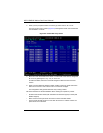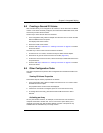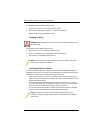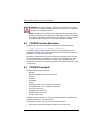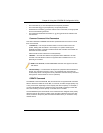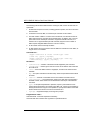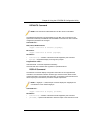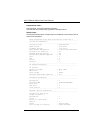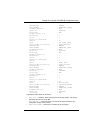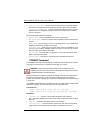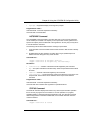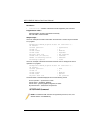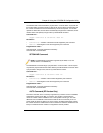
AOC-USAS-L8i Add-on Card User’s Manual
9-4
The following rules must be observed when creating IM, IME, and IS volumes and hot
spare disks:
1. All disks that are part of a volume, including global hot spares, must be on the same
SAS controller.
2. A maximum of two IM, IME, or IS volumes per controller can be created.
3. The total number of disks in a volume cannot exceed ten, and the total number of
disks combined for two volumes cannot exceed twelve. In addition, one or two hot
spare disks can be created per controller to support IM and IME volumes, for a
maximum of 14 supported disks per SAS controller. (Support for this number of
disks requires Integrated RAID firmware v1.20.00 or above.)
4. An IM volume must have exactly two disks.
5. An IME volume can have a minimum of three disks and a maximum of ten disks, as
long as rule 3 is not violated.
Command Line –
cfggen <controller #> create <volume type> <size>
{<SCSI ID>} [qsync] [noprompt]
cfggen <controller #> create <volume type> <size> bay
{<enclosure:bay>} [qsync] [noprompt]
Parameters –
• <controller #> – Number of the SAS controller targeted by this command.
• <volume type> – Volume type for the new volume to be created. Valid values are
IM or IME or IS.
• <size> – Size of the RAID volume in megabytes, or MAX for the maximum size
available.
• Bay – This option indicates that enclosure:bay values are specified instead of SCSI
ID values.
• <SCSI ID> – SCSI ID of a hard disk drive to be included in the RAID volume.
• <enclosure:bay> – The enclosure:bay value for the disk drive to be included in
the RAID volume. These values can be obtained from the output of the DISPLAY
command.
• qsync – If this optional parameter is specified, a quick synchronization of new
volume will be performed. If the volume type is IME or IS, a quick synchronization is
always performed even if qsync is not specified. A quick synchronization means that
the first 32-KB of the drives in the volume are cleared to 0.
• noprompt – Suppresses display of warnings and prompts.
Program Return Value –
0x00 SUCCESS: command completed successfully.
0x01 FAILURE: bad command line arguments or operational failure.



